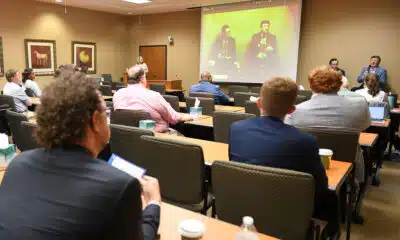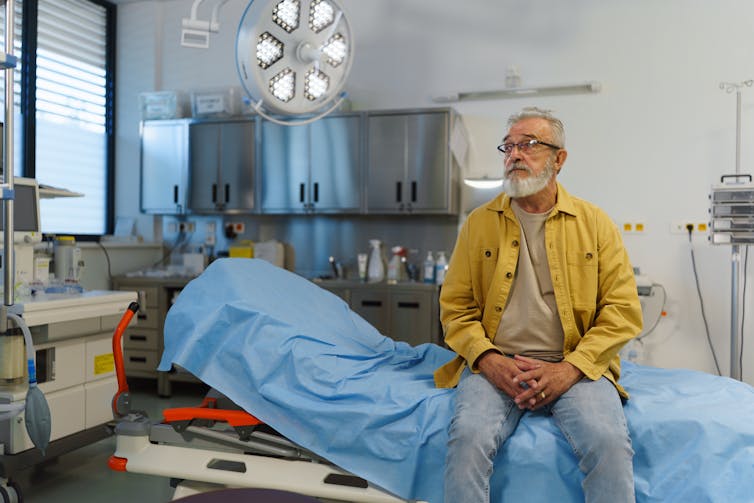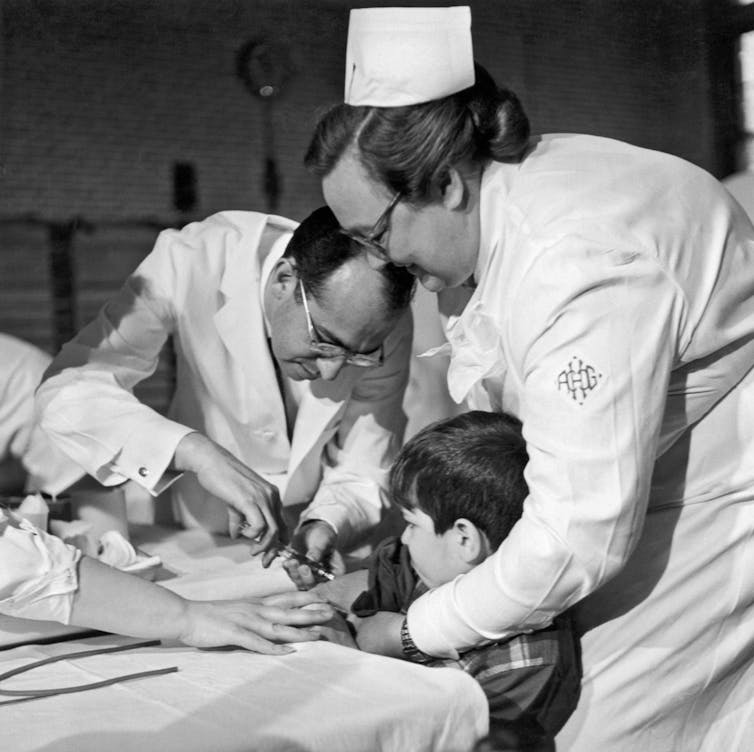Keep the volume of your personal listening device at or below 60%.
Jillian Hubertz, Purdue University
Curious Kids is a series for children of all ages. If you have a question you’d like an expert to answer, send it to curiouskidsus@theconversation.com.
I like to listen to music all the time. Are there any negative aspects to this? – Hussein, age 17, Iraq
Music surrounds us. It can be a companion throughout the day – listening on the way to school or work, checking out a favorite artist with friends, hearing it live at concerts and sporting events, enjoying or enduring it in stores and restaurants, and then listening again in the evening to unwind.
As meaningful and uplifting as music can be, it might also help you while studying, working on school projects and doing homework. As a clinical assistant professor of audiology, I can tell you the research shows that music can increase your focus and even motivate you.
This connection depends somewhat on the individual. Some people need silence while doing homework. Human brains are limited in their ability to multitask, and some people are better at doing two things at once compared with others. The style of music, the activity you’re doing and the effort it takes to complete the work also matter.
Some types of music work better than others
Numerous studies have discovered how music can affect study and work habits:
-
Listening to instrumental or familiar music in the background competes less with a study assignment than music with lyrics or unfamiliar music. Instrumental music also seems to interfere less with reading comprehension and assignments requiring verbal and visual memory than does music with lyrics.
-
One study showed soft, fast music had a positive impact on learning, but loud and fast, loud and slow, and soft and slow hindered learning.
-
Upbeat music with a higher tempo may help when you’re doing something requiring movement or motivation, such as exercising or cleaning your room.
-
The more difficult your task is – for instance, memorizing material, problem-solving or learning something new – the more likely the music is distracting and people often need to turn it off.
But before listening to your favorite sounds while studying, don’t miss an important detail: the volume.
The damage begins early
Whether listening through speakers, headphones or earbuds, too high a volume can damage your hearing. It’s known as noise-induced hearing loss, and it happens more often than you might think – those high-volume sounds can destroy tiny, delicate hair-like structures in the inner ear that help you hear.
Inner-ear damage can occur from a single exposure to an extremely loud sound or from repeated exposure to loud sounds over months or years. While some parts of the ear can repair themselves, the inner ear cannot fix itself.
Close to 1 in 5 Americans ages 12 to 19 – about 17% – demonstrate signs of noise-induced hearing changes in one or both ears, which could eventually lead to hearing loss.
Volume, time, distance
How dangerous a sound is to your hearing depends on three things: the volume of the sound, the length of time you listen, and how close you are to the sound.
Sounds are measured in decibels, or dB, and the dBA scale reflects how the human ear hears sound.
Typically, sounds at or below 70 decibels are safe for listening. Conversations generally register at about 60 dBA, city traffic at about 80 dBA.
Sounds that may be harmful include lawn mowers, at roughly 95 dBA, rock concerts, at around 120 dBA, and fireworks, at about 140 dBA.
The World Health Organization suggests a sound allowance for weekly exposure, based on loudness. For example, you could listen to a 75 dBA sound for 40 hours per week. But listen to something at 89 dBA and that time allowance is drastically reduced, to about an hour and a half.
Signs you’ve been exposed to a dangerously loud sound include muffled hearing, ringing in the ears and difficulty having a conversation from 3 feet (1 meter) away.
Although your hearing generally returns to normal after such an experience, there is a cost. This temporary shift in hearing could lead to permanent harm to inner-ear structures and ultimately damage your hearing.
How to stay safe
Technology not available even a few years ago can now alert you of a risky listening environment. A sound-level meter app measures the sound around you to determine whether it’s too loud. So can some smartwatches.
If listening through speakers, the sound-level app can warn you if your tunes are creeping toward too loud. When wearing headphones or earbuds, keep it at or below 60% of the volume allowed by your device. One rule of thumb: If someone else can hear the sound emanating from your headphones or earbuds when they are an arm’s length away from you, the volume is too loud.
Use high-quality, noise-canceling headphones or earbuds to hear the audio at a safer, lower level. Some headphones also have volume limitations.
Use hearing protection, such as disposable earplugs or earmuffs, when you’re around loud sounds, such as concerts, fireworks or a lawn mower.
You can also simply decrease listening time. Taking breaks lets you avoid overexposure.
Follow these tips and you should be able to enjoy your favorite music, games and conversations for decades to come. Pay attention to what music helps your concentration rather than distracts you, and your schoolwork might benefit, too.
Hello, curious kids! Do you have a question you’d like an expert to answer? Ask an adult to send your question to CuriousKidsUS@theconversation.com. Please tell us your name, age and the city where you live.
And since curiosity has no age limit – adults, let us know what you’re wondering, too. We won’t be able to answer every question, but we will do our best.
Jillian Hubertz, Clinical Assistant Professor in Speech, Language, and Hearing Sciences, Purdue University
This article is republished from The Conversation under a Creative Commons license. Read the original article.





























































